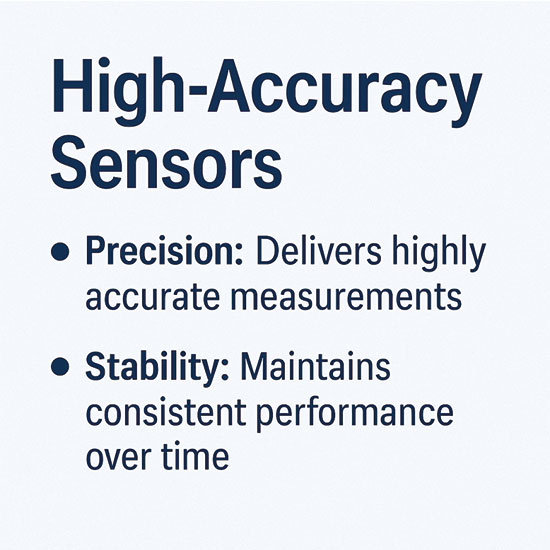In the fast-paced world of industrial automation and electrical systems, sensor accuracy is not a luxury — it’s a necessity. For decision-makers involved in designing or maintaining substations, switchgear, or smart grid systems, choosing the right sensor often comes down to two key factors: precision and stability over time.

Modern power systems rely on precise sensor readings to ensure safe and efficient operation. Whether measuring current, voltage, or temperature, even a slight deviation in sensor data can lead to:
·Faulty system protection triggers
·Misjudged load balancing
·Inaccurate energy billing
·Equipment overheating or premature aging
High-accuracy sensors typically feature low tolerance errors (e.g., ±0.2% or lower), enabling tight control over protection relays, SCADA systems, and smart monitoring units.
A sensor’s initial accuracy is important — but long-term stability is what truly defines quality. Over years of use, especially in high-voltage or outdoor environments, cheaper sensors may drift in measurement or lose calibration.
Premium sensors offer:
·Minimal drift over time (typically <0.1% per year)
·Excellent thermal stability across –40 °C to +85 °C
·Resistance to electromagnetic interference (EMI)
·Enclosure protection (IP65, IP67, etc.) to withstand dust, water, and corrosion
When evaluating sensor options, consider these technical specs:
·Accuracy Class: 0.2, 0.5, or 1.0 — depending on system criticality
·Linearity: Maintains consistent output across the full measurement range
·Repeatability: Sensor gives identical output under repeated identical conditions
·Stability Test Certifications: Proof of performance under long-term conditions
·Temperature Compensation: For stable output despite ambient fluctuations
High-accuracy sensors are especially vital in:
Smart meters and advanced metering infrastructure (AMI)
Medium-voltage switchgear for protection coordination
Industrial energy management systems
Renewable energy generation (e.g., solar and wind farms)